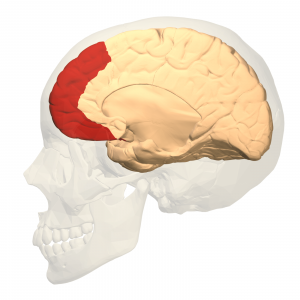Mindful Learning
This page details all the information you need to know about our course on mindful learning. In just four simple steps, you’ll learn:
- What mindful learning is
- Who benefits most from mindful learning
- What the science behind mindful learning is
- How you can sign up for a free course
Enjoy this article. We’re sure you’ll become a mindful learning enthusiast after reading it 😉

1. What is mindful learning?
In its essence, mindful learning means that you find subtle and new ways to approach your learning material. We are usually taught to repeat the same steps over and over again without any variability. Mindful learning settles with this repetitiveness by making us look at the study material at hand, as if it is novel and at our study methods, as if they are one out of many. We literally take all aspects of mindfulness that have proven to be effective and use them to optimize our traditional learning methods. A mindful approach to learning has three major advantages:
- Improved memory. Yes, you’ve read this right. A mindful approach to learning will actually improve your memory. This way you don’t have to go over your material again and again when you learn something new!
- Increased attention span. Not only will you be able to better memorize your learning material, you’ll also be able to focus for longer periods of time. Imagine that you’ll be able to complete your task in one run and just be done with it!
- Improved problem solving skills. This is where the real magic happens. Mindful learning actually allows you to gain more profit out of the same learning material. It won’t be long before your supervisor will notice your enhanced problem solving skills!
2. Who benefits from mindful learning?
Of course, everybody benefits from a mindful approach to learning. However, mindful learning is especially helpful for people who need to process a lot of information on a day to day basis. Just do an experiment where you count the amount of times you get distracted from doing your work. Are you fully aware of the amount of time and energy these distractions cost you? Did you know you can easily save up to 20-50% of your time by applying a mindful approach to learning? Just imagine how nice it would be to spend these savings on some extra quality time with your family or friends (or a soothing moment for yourself, this is totally up to you). We feel that if your profession lies within one of the following categories, you should apply to our course without further hesitation:
- Managers and employees in any given office environment
- Managers and employees who work for governmental or non-profit organizations
- Managers and employees who work in the ICT sector
- High school, college and university students
Are you unsure whether you belong to one of the above categories? Feel free to contact us and will come back to you ASAP.
3. What is the science behind mindful learning?
Learning is a very complex process that demands a lot from your brain. Thanks to the invention of the MRI-machine (magnetic resonance imaging), scientists are able to create models of your brain that show which parts of your brain become active under which circumstances. Of course, scientists researched the complex process of learning and they found that one part of your brain is heavily involved with learning: the prefrontal cortex.

The prefrontal cortex is highly associated with decision making and the planning of complex cognitive behaviour. At its most fundamental level, this part of the brain is responsible for fine-tuning thoughts and actions to accomplish your internal goals. You can probably already see a connection happening between this part of the brain and the process of learning. To learn, you must engage your prefrontal cortex to focus and monitor your attention and to inhibit impulsive tendencies towards distraction. If there was only a way you could better prepare your prefrontal cortex to the process of learning..
Well, a study that used MRI scans to draw an inventory of the effects of mindfulness on the brain shows us that there’s a way to strengthen our prefrontal cortex. After eight weeks of mindfulness practice, the amygdala (the brain’s “fight or flight” center) decreases in size. The amygdala is associated with fear and emotion. Of course, fear and emotion have a negative impact on your learning process. This study also shows that, while the amygdala shrinks, the prefrontal cortex actually becomes thicker. Therefore, we can actually draw a picture in which mindful practice down-regulates lower-order brain activity, while increasing your ability to tap into all the benefits that your prefrontal cortex has to offer!
To summarise, research into prefrontal cortex and the effects of mindfulness on the perceived brain activity show us that:
- There’s a direct relation between the process of learning and brain activity in the prefrontal cortex.
- Mindful practice actually thickens the prefrontal cortex.
You can probably see that combining mindfulness with the process of learning actually makes a lot of sense. Enough talk, enrich yourself with all the benefits mindful learning has to offer!
